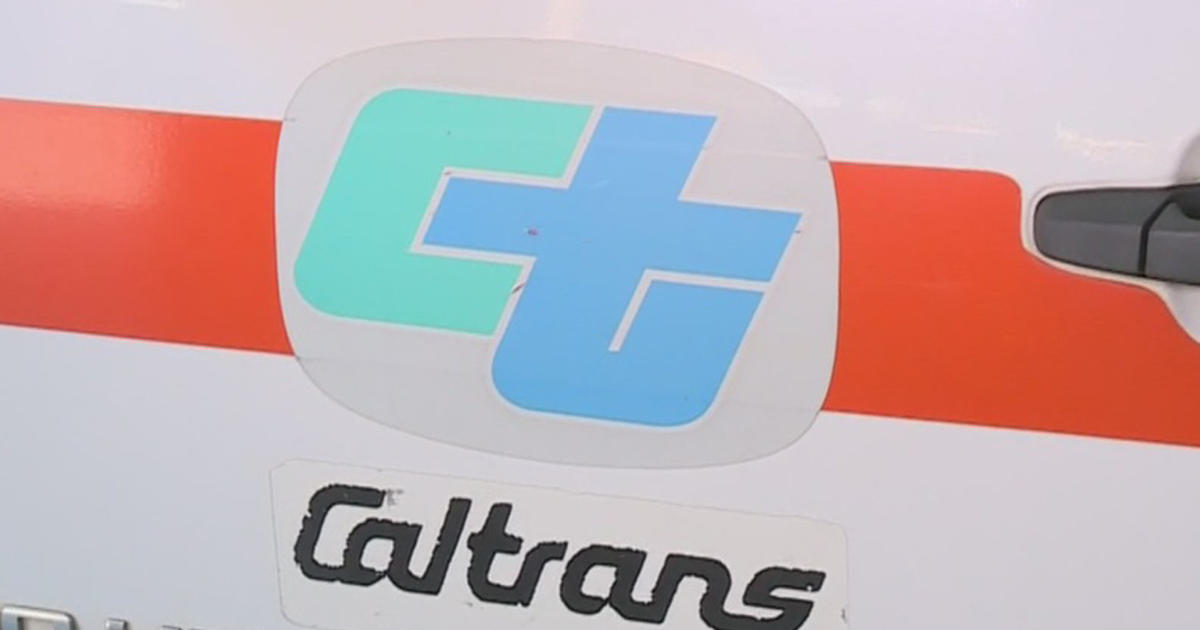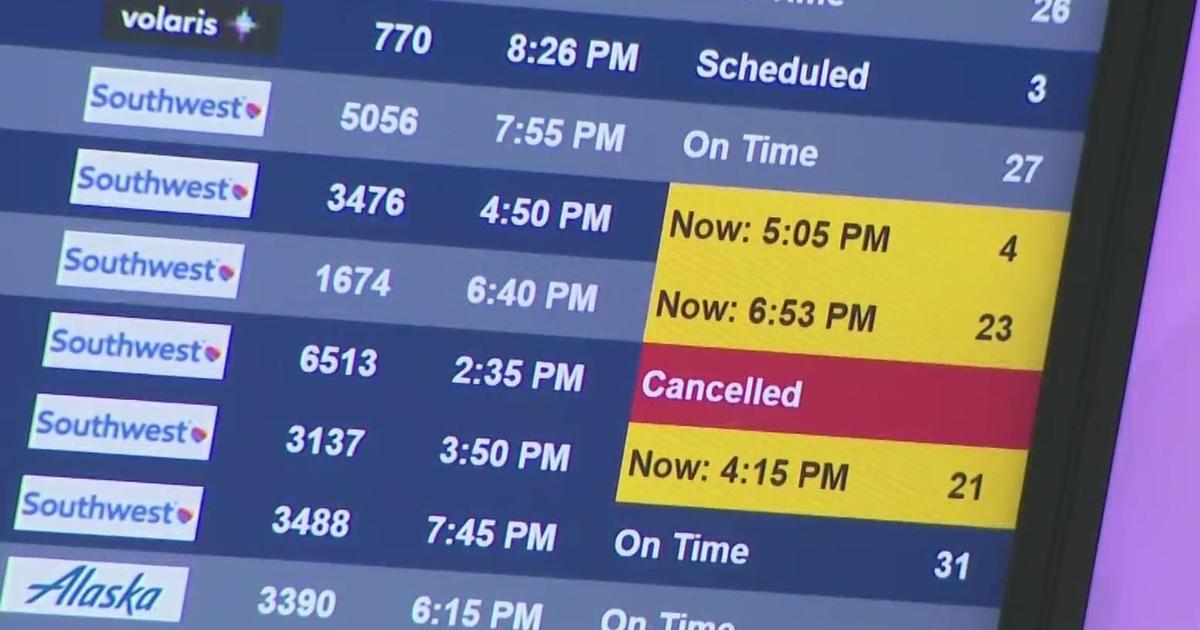Gov. Newsom Outlines California's New Simplified, 4-Tier COVID-19 Reopening Guidelines
SACRAMENTO (CBS SF) -- Gov. Gavin Newsom on Friday provided details on California's new simplified, four-tier, COVID-19 guidelines for counties to reopen specific business sectors based on what health officials have learned about the pandemic in recent months.
Newsom briefly provided an update on the state's progress fighting numerous wildfires, but quickly turned his discussion to COVID-19, restating California's need to adjust with long-term strategies to deal with the pandemic.
"COVID-19 will be with us for a long time and we need to adapt," explained Newsom. "This idea that it was going to go away in the summer during the warmer months, that somehow it would disappear based on an assertion or a tweet or a headline has obviously been substituted by a different reality that we're not only experiencing here in California but all across the nation."
ALSO READ:
- San Francisco Set To Reopen Outdoor Services Like Gyms, Hair & Nail Salons
- Large Foster Farms Chicken Processing Plant Ordered To Shut Down; 'It's Time To Hit The Reset Button'
- Contra Costa, Alameda Counties Allow Select Businesses To Reopen Outdoors
Newsom went on to say that health officials have learned a great deal about COVID-19 and how the virus spreads, which has led to some of the adjustments to California's sector framework to keep residents healthy and safe.
Newsom said based upon what state health officials have learned during the pandemic, reopening guidelines have been adjusted to this new framework.
"We wanted to make adjustments based upon the input we received from county health officers, input we received from experts, our own experience here in the state of California, to adjust the frameworks from the old monitoring list to a more dynamic list that we hope is not only more dynamic, but is much more simple to understand," Newsom said. "Stringent, though, nonetheless in terms of its application but statewide in terms of its consequence in terms of what it covers."
The governor said that the state's "blueprint for a safer economy" would be built on guidelines that are "statewide, simple, slow and stringent." The new system would be based on statewide criteria and a uniform framework providing four tiers of reopening rather than differing sets of restrictions and guidance for each county in the state.
Newsom explained that movement between the tiers of reopening would be determined by simpler metrics focused mainly on case rate and test positivity along as well as an additional health equity requirement.
The governor said that the new four tier color-coded system would match a color to each of the four tiers with purple representing the highest "widespread" risk level for a county with more than seven new cases per 100,000 residents and more than 8 percent positivity rate. Red will represent "substantial" risk, while orange represents "moderate" risk and yellow the lowest level, "minimal" risk, with those lower levels being determined by reduced numbers in case and positivity rates.
"We don't put up green because we don't believe that there's a green light that says just go back to the way things were or back to the pre-pandemic mindset," Newsom explained. "Quite the contrary. These are the guidelines, the color-coded county guidelines that we're putting forward to get us through this flu season and...work through the next few months in the state of California."
The color will determine how businesses can operate in each county, with the purple "widespread" category replacing the state monitoring list, according to Newsom.
The governor said the state COVID-19 website now has an updated section providing additional details on the new system and a space that allows users to look up what their county's status is and whether or not a specific business can reopen. He encouraged residents to visit the site to learn more about the new system.
The new tiered system will go into effect Monday, August 31, at the same time that hair salons and barbershops will receive a green light from the state to begin operating indoors with modifications statewide, regardless of which tier their county sits within.
Previously, salons and barbershops had only been allowed to operate outdoors for counties on the monitoring list.
State Health and Human Services Secretary Dr. Mark Ghaly did note that operation of those businesses still requires approval from local officials.
"Hair salons and barbershops in the purple widespread will be allowed to operate starting as soon as Monday. I want to remind you of one other factor that not only, these are the state guidelines, county guidelines may be more stringent than what the state says," explained Ghaly. "The state's order cannot be, at the county level, made less stringent. But if a county sees conditions that cause them to be even more stringent than the state. That has always been the way California worked. It's the way California has worked throughout this pandemic...and that will continue moving forward."
"Barbershops -- based upon these new tiers, even based upon this 'widespread'...purple category -- can reopen," added Newsom. "But all of this subject to if local health authorities want to be more stringent subject to their attestation."
The governor noted that there were currently some 38 counties or 87 percent of the state's population in the purple "widespread" category as outlined by the new system. Nine counties were in the red tier, eight counties were in the orange tier and only three counties had qualified for the yellow "minimal" risk tier.
Napa and San Francisco were the only two counties in the Bay Area so far to have moved from the "widespread" category to the red "substantial" risk factor tier.
Newsom said that counties moving between tiers will need to have meet that tier's criteria for the two weeks leading up to the move, with a mandatory 21-day wait time between each move. Counties will only be able to move one tier at a time.
Newsom reiterated the new guidelines would be much more stringent and would dispense with the process of attestations that allowed individual counties to bypass some guidelines.
"We put out guidelines, they didn't mean 'go.' But we empowered the counties to make decisions based upon attestations and partnerships they had to form with county health officers signing off with county officials on their ability to move," said Newsom. "We're going to be more stubborn this time and have a mandatory wait time between moves. We didn't do that last time and that is a significant distinction between what we've learned from the past and what we now are advancing in this, more stringent but we believe more steady, approach to moving counties within tiers and modifying the activities within those respective counties."
Counties will move to higher risk category if they fail to meet the current tier's criteria for two straight weeks.
While the system goes into effect next week on August 31, the state will begin its weekly assessments of the criteria that will determine what tier a county is in on September 8. Assessments will be made every Tuesday.
Ghaly also spoke briefly on the reopening of schools during Friday's presentation, noting that the two-week waiting period for counties that had come off the state monitoring list would remain in effect under the new system.
The state's first attempt at reopening led to increased spread of the virus in June and July. The state's coronavirus hospitalizations spiked during that time, from 3,142 on June 4 to 7,170 on July 21.
Since mid-July, when the state clamped down on indoor operations at businesses like bars, movie theaters and restaurants, statewide
hospitalizations have fallen to 4,205, as of Thursday.
The tier system will not include thresholds for hospitalizations and ICU bed availability that counties must meet to progress from one tier.
That change clashes with previous suggestions from Newsom and state health officials that hospitalizations and ICU data were vital real-time metrics to track the virus' spread.
Ghaly said focusing on case and test data is a way of catching the virus earlier than hospital data allows.
"We know that when you find a case today that it has a chance to end up in the hospital three, four weeks down the road," he said. "We still maintain that those hospital numbers are very reliable."




